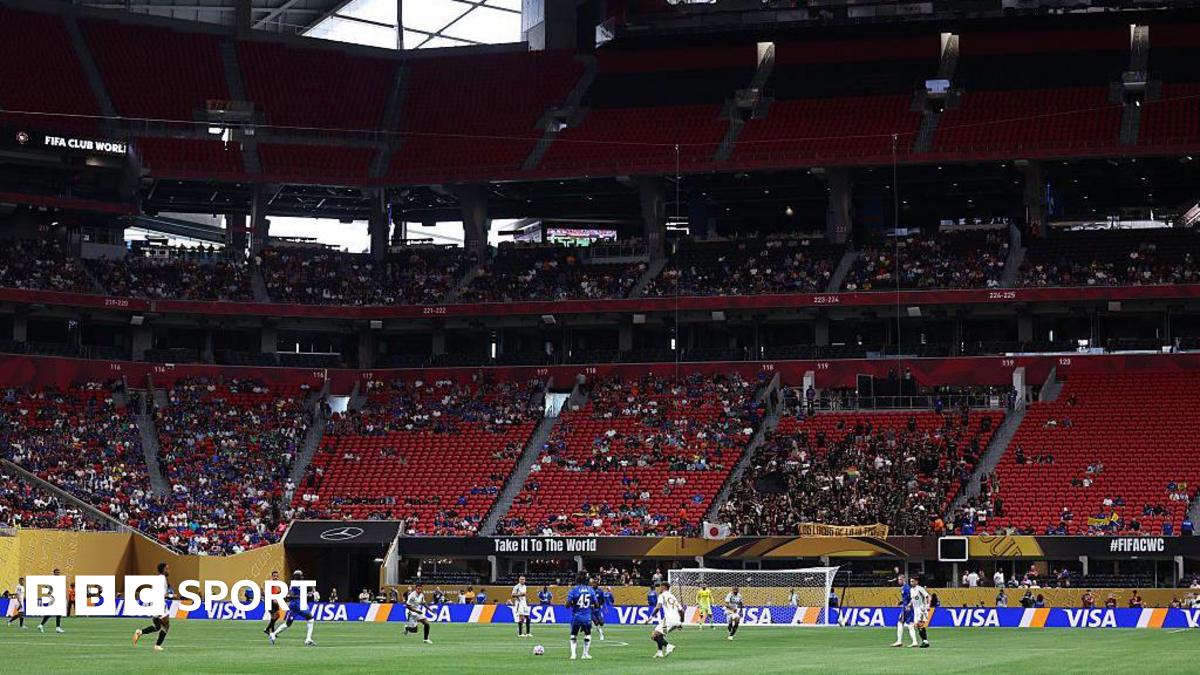To be perfectly, 100 percent, squeaky crystal clear: This is not about protecting Caitlin Clark.
Well, actually, it somewhat is. It’s about Clark and every other player who dons a WNBA jersey, steps onto the court and battles their heart out every night for the game they love. They all deserve better. WNBA referees are often letting games get so far out of hand that the scuffle to end Indiana Fever’s blowout over the Connecticut Sun on Tuesday night was far from a surprise.
Advertisement
It was expected.
Fever head coach Stephanie White said as much in her postgame comments, a continuation of a month of alluding to an impending problem that busted open on a night bulging with high-stakes competition and the Fever’s first Commissioner’s Cup final berth.
“I think it was pretty obvious that stuff was brewing, right?” White said, handling the officiating questions for players and eating the impending fines. “When the officials don’t get control of the ball game, when they allow that stuff to happen — and it’s been happening all season long, all season long. It’s not just this game, it’s been happening all season long — this is what happens.”
"This" was a full-on final-minute quarrel initiated by Sophie Cunningham delivering a hard foul to Sun guard Jacy Sheldon, who fairly took exception. Cunningham held Sheldon in a head lock that could input nicely into a wrestling video compilation, and teammates on both sides rushed over while coaches attempted to pull everyone away for the second time in as many hours.
None of that happens in a vacuum. The game was chippy all night, a phrase that’s becoming a feature of the league rather than a fun, light bug. It’s a misdirect, an illusion to minor banter when what’s really on the cusp is line brawls reserved for the ice, not the hardwood. All of it masks the very real officiating issues at play and the worst-case results that can stem from them.
Advertisement
"That stuff" is missed foul calls, constant hacking and a lack of overall consistency. For every lack of a call, the defenders grow more bold. More physical. More daring in their attempts to do anything that will stop a bucket. It’s the same as a shooter making shots and seeing the basket grow bigger every trip down the court.
“You’ve got competitive women who are the best in the world at what they do, right?” White said. “And when you allow them to play physical, and you allow these things to happen, they’re going to compete. And they’re going to have their teammates' backs. It’s exactly what you expect out of fierce competition.”
And it makes perfect, natural sense. If there is no repercussion, there is no reason to stop the action. And there’s every reason to step in on behalf of the aggrieved. Everyone has spent time around a toddler whose parents play fast and loose with boundaries. It’s a game of test, test, test to see how far they can go while those around them slowly lose their cool.
WNBA players, we’ve seen, are able to go quite far. No one is better for it.
Advertisement
The brewing in this specific instance technically dates back to four years of bitter Big Ten heat between Ohio State’s Sheldon and Iowa’s Clark. One of their more notable college tie-ups came barely 15 months ago.
It took on a new tenor in the third quarter Tuesday night when Sheldon swiped at Clark’s face on a hard foul, sending her to the ground. Clark popped back up holding her eye and bumped into a chest-baring Sheldon. That sequence could be written away as unintentional by each. Sheldon received a flagrant 1 for "unnecessary" contact with “wind up and impact,” per the pool report.
Marina Mabrey stepping in to shove Clark to the floor is a harder move to excuse.
Advertisement
Mabrey’s repercussion for that? Nothing more than a technical. Same as Clark and a finger-wagging Tina Charles, who were both tagged with it for “unsportsmanlike manner.”
“The contact made by Mabrey did not rise to the level of an ejection,” officiating crew chief Ashley Gloss said, per the pool report. “Additionally, [it] did not meet the criteria for a flagrant foul penalty two.”
That decision alone, given the cadence of the prior two quarters, created an open season of hard, unnecessary fouls down the stretch that could have been avoided.
And no, this is not a specific Fever problem, either. Or a Clark one.
Advertisement
“I’ve seen quite a few dust-ups in the league so far, so I think it’s a league-wide issue,” White said. “Bad officiating is bad officiating.”
Forward Olivia Nelson-Ododa said as much in the Sun’s simultaneous press conference.
“This isn’t the first game that this has happened,” she said. “You can look over the course of the games in the league and see how much more physical it is this year. When things aren’t getting called and things are just blown out of proportion like that. … When you’re not managing the game properly, this is what happens.”
A’ja Wilson remains in concussion protocol after a hard hit to the face. Paige Bueckers recently sustained a concussion. Players throughout the league, at all positions, are facing defensive tactics bearing more resemblance to checks and tackles.
Advertisement
Alarm bells have been ringing regularly. White spoke out about a lack of foul calls weeks ago as teams continue to push the boundary and play her Fever team as physically as refs will allow. Los Angeles Sparks guard Kelsey Plum grew emotional last week while talking through her lack of calls despite touching the paint most possessions. She’s grown frustrated with how to handle it.
“There’s multiple shots at the end of the game either going into the third, into the fourth where they’re just coming and f***ing swinging,” Plum said. “And [refs] just don’t call anything.”
Lynne Roberts nodded her way through Plum’s remarks, hitting the same tired line of so many coaches in this league.
“Obviously the scouting report is to be as physical as you can with her,” Roberts said. “It’s being allowed. And so we’ve got to talk to the league about that, but it isn’t right. I’ll echo that.”
Advertisement
“Physical” is the new codeword for “whatever it takes.” Or, rather, “whatever we can get away with.” And in the end, there’s a real chance someone could be hurt in these dust-ups and hard fouls, whether it’s by the initiator or the retaliator. Injuries are already mounting, negatively impacting a league with a small footprint and short rosters.
Refs carry the weight of safety in their hands, and they’ve been dropping the ball with a hard thud that's reverberated beyond one single game. To be perfectly clear, the job is difficult. No one is arguing that. The millions watching and re-watching on TV and social media increase that burden.
Advertisement
Yet, at this level and this moment in the league’s history, when more people than ever are interested, the product deserves more than what happened on Tuesday night.
“Everybody’s getting better, except the officials,” White said. “So we got to find a way to remedy it. I mean, you’ve heard every coach talk about it, so I don’t know what the answer is.”









 English (US) ·
English (US) ·